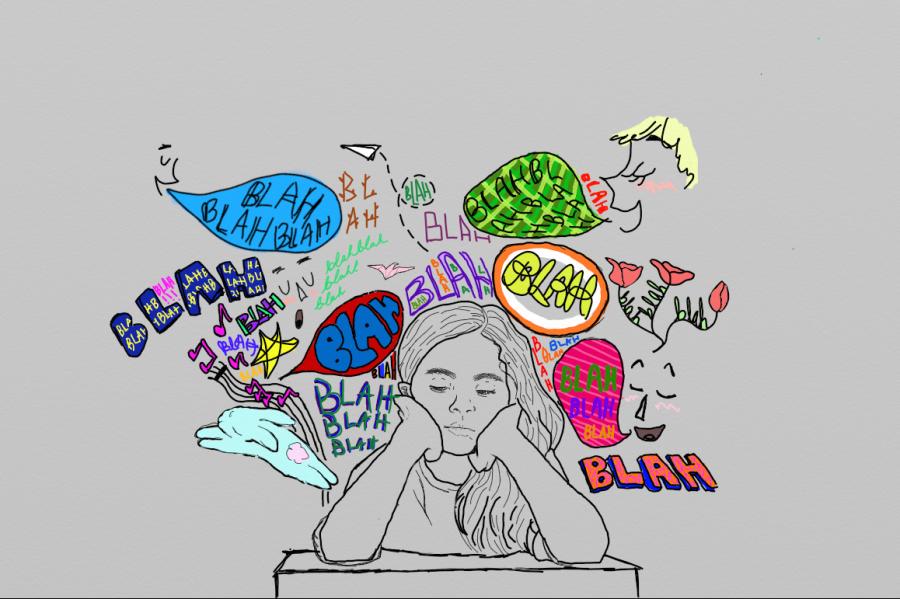ADHD: Causes, Effects, Treatments
-By Sania Patel

Mental health is commonly defined as a person’s condition with regard to their psychological and emotional well-being. Mental health affects how people think, feel, and act. It also determines one’s performance of daily activities, such as handling stress, relationships, and choices. Overall, mental health refers to the cognitive, behavioral, and emotional well-being of individuals. Mental health can have harmful effects on different aspects of both mental and physical health.
Increasingly popular are mental illnesses. According to the American Psychiatric Association, mental illnesses are described as
“health conditions involving changes in emotion, thinking or behavior (or a combination of these). Mental illnesses are associated with distress and problems functioning in social, work or family activities.”
In today’s rapidly developing world, mental illnesses are becoming increasingly popular. The American Psychiatric Association, reports that nearly one in five (19 percent) U.S. adults experience some form of mental illness. Another, one in twenty-four (41 percent) suffer from a serious mental illness that affects the individual’s physical capabilities.
ADHD is one of the most common neurodevelopmental disorders in the world. There are very few effective treatments available and misdiagnoses are increasingly common. ADHD stands for attention-deficit hyperactivity disorder, and it affects both children and adults. People who suffer from ADHD often display high activity levels, limited attention spans, and impulsivity.
According to the American Psychiatric Association, an estimated 8.4 percent of children and 2.5 percent of adults have ADHD. ADHD is also more prevalent among boys than girls. There are many symptoms of ADHD, which can further affect the individual’s performance in school or at their job. Some popular symptoms include lack of attention to detail, loss of concentration, difficulty keeping track of everything, avoidance of tasks that require sustained mental effort, and impulsive or hyperactive behaviors.
People with ADHD are mostly affected by the hyperactivity aspects of the mental illness. They often talk excessively, fidget, and are unable to complete leisure activities quietly. It is difficult for them to wait their turn, stay seated, or avoid interrupting others.
The Centers for Disease Control and Prevention (CDC) describes three different types of ADHD and these three types of ADHD cause different symptoms. One type is Predominantly Inattentive Presentation. This typically means that it is hard for the individual to pay attention, stay organized, and finish a task. They also have difficulty remembering daily routines and following instructions or conversations. The other type of ADHD, Predominantly Hyperactive-Impulsive Presentation, often affects an individual’s ability to control their physical actions. People with this type of ADHD fidget and talk with little control. This individual often feels restless and has trouble with impulsivity. They may interrupt others, speak at inappropriate times, or grab things from people. It is hard for them to wait their turn or listen to directions. The final type of ADHD, combined presentations, displays the symptoms of both previously mentioned types.
It is difficult to determine the true cause of ADHD and scientists are intensively studying the cause and risk factors in order to better manage and reduce ADHD. Besides genetics, scientists point to brain injury, low birth weight, premature delivery, exposure to environmental risks, and alcohol or tobacco use during pregnancy, as potential causes of ADHD.
ADHD can greatly hinder mental and physical development, as well as performance in everyday tasks. Due to this, it is common for people with ADHD to face social isolation, decreased scholastic and job performance, difficulty maintaining relationships, dropping out of school, teen pregnancy, motor vehicle accidents, and increased risk-taking behaviors. Focusing on the mental aspect, many ADHD-afflicted individuals develop depression, anxiety, and insomnia.
There is no treatment that can cure ADHD, however, there are potential options to alleviate its symptoms. One form of treatment is medication. Medication can be used to reduce hyperactivity and impulsivity. It can also improve the individual’s ability to focus, work, and learn. Atomoxetine (Strattera) is the most common drug among adults and children, as it is the safest choice, offering minimal side effects. Medication can also be split into stimulants and non-stimulants. Stimulant drugs are used to increase the brain chemicals, dopamine, and norepinephrine, to promote better thinking and attention. Non-stimulant medications are used to improve focus, attention, and impulsivity. When a stimulant is not effective or causes unwanted side effects, it is common for doctors to recommend non-stimulants or combine them with current medication.
Another form of treatment arises from psychotherapy and psychosocial interventions. These interventions have been proven to manage symptoms of ADHD and improve everyday functioning. By meeting with therapists and other medical professionals, both children and adults can share their issues and discuss with a helpful advisor about next steps. Therapy also provides a safe place in which families affected by an individual with ADHD can provide helpful solutions and coping techniques. The most common types of therapy recommended to patients with ADHD are cognitive behavioral therapy, parenting skills training, and specific behavioral classroom management interventions (or academic accommodations). Support groups are also recommended to allow people with ADHD to discuss the mental illness and brainstorm solutions to help them cope with their symptoms.
Parents of younger individuals who have ADHD are recommended to help their children stay organized and find creative solutions to ease their symptoms. It is important for both teachers and parents to create tools promoting the organization and increased attention spans. By keeping a routine and schedule, the symptoms of ADHD are suppressed, as children are more likely to remember their activities and other everyday tasks, due to their repetitive nature. Organizing items helps children with ADHD become more independent and holds them accountable for their personal belongings. Through this, children actively fight against their symptoms. Finally, parents and teachers are encouraged to be clear, consistent, kind, and patient. Children with ADHD often expect and receive criticism, and, to counteract this, adults must act as supportive, prideful leaders, to help the individual find meaning in developing their skills.